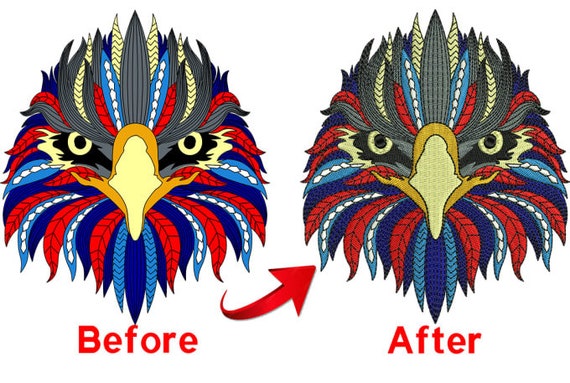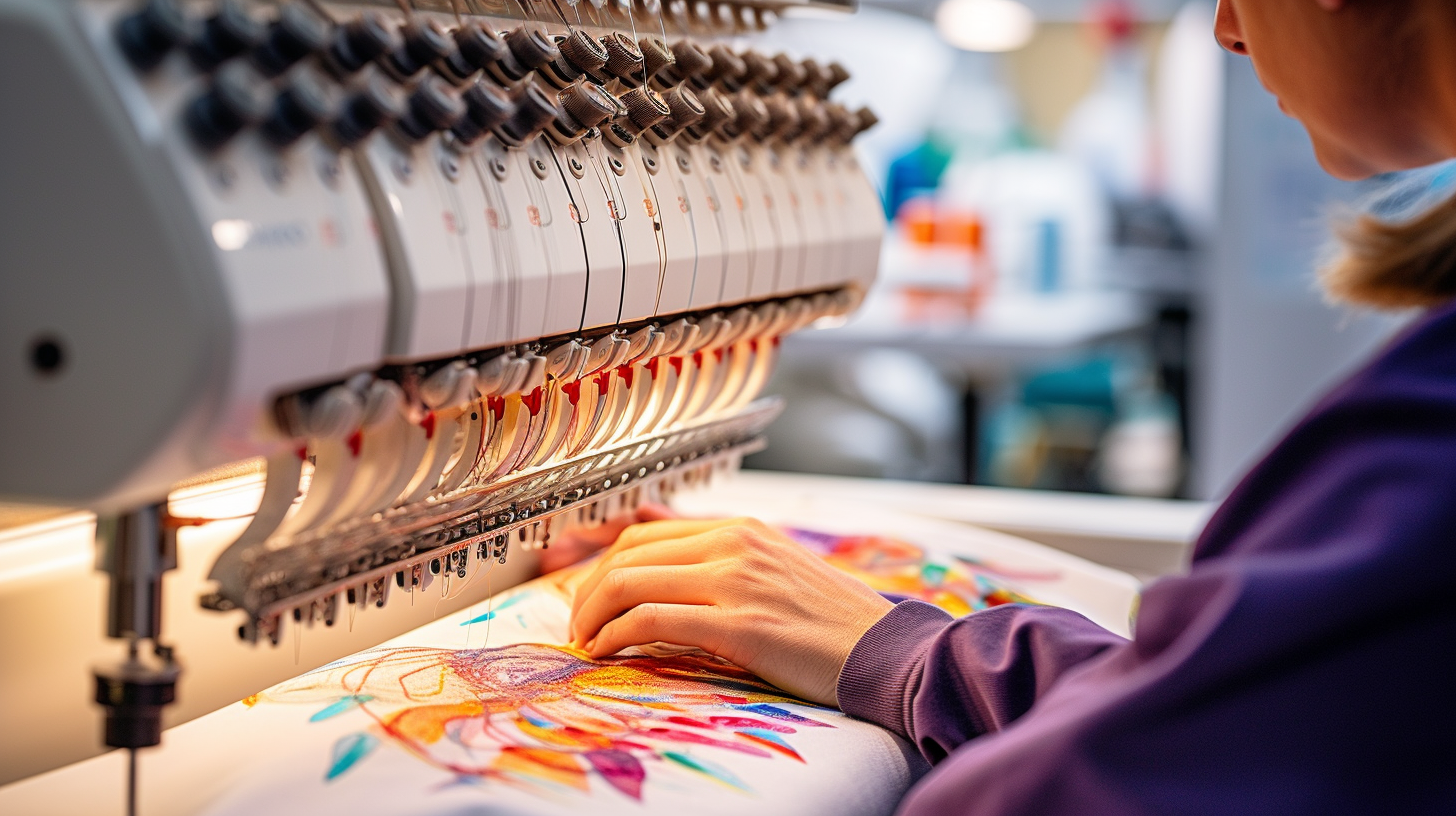Streamlining the Art of Embroidery Digitizing: Step-by-Step Overview
Needlework digitizing is a meticulous craft that requires accuracy and creativity. As innovation remains to development, the digitization process has ended up being a lot more obtainable, allowing lovers to bring their intricate layouts to life effortlessly. In this overview, we will decipher the complexities of needlework digitizing, breaking down each action carefully to improve the process and equip both beginners and skilled embroiderers alike. Keep tuned to find how you can streamline this complex art form and change your innovative visions into perfectly embroidered masterpieces.
Understanding Needlework Digitizing Software
Needlework digitizing software program serves as an essential device for transforming complex designs into digital layouts compatible with needlework makers, helping with accurate stitching and modification. This customized software allows individuals to import numerous image data layouts, such as JPG or PNG, and transform them into embroidery machine-readable layouts like DST, EXP, or PES - Digitizing for Embroidery. By using features like stitch modifying, padding options, and thread shade choice, digitizing software program allows customers to control every facet of the design procedure
Additionally, advanced needlework digitizing software application supplies devices for creating complex styles, changing stitch thickness, and including detailed details. Individuals can also sneak peek the layout prior to stitching it out, making sure accuracy and minimizing errors. Furthermore, lots of software application supply automated functions that help simplify the digitizing procedure, conserving effort and time.
Comprehending the capacities of needlework digitizing software is crucial for attaining high-grade lead to embroidery projects. By grasping this tool, embroidery fanatics and experts can unleash their creativity and bring intricate designs to life with precision and performance.

Selecting the Right Design File
After familiarizing yourself with the abilities of needlework digitizing software program, the following crucial action in the process is choosing the ideal style apply for your job. Digitizing for Embroidery. When choosing a design apply for embroidery digitizing, it's vital to take into consideration the intricacy of the design, the dimension of the last product, and the sort of fabric you will certainly be dealing with
For complex layouts with great information, a high-resolution photo or vector data is suggested to guarantee that the needlework maker can accurately reproduce the layout. Furthermore, the size of the end product plays a significant duty in choosing the right style file. Bigger styles might need higher resolution data to maintain quality and sharpness.
Additionally, the type of material you will be embroidering on affects the choice of layout data. Different materials may need adjustments in the style file to make sure that the stitches are appropriately aligned and the style shows up as meant. By thoroughly picking the best design documents based upon these elements, you can set on your own up for an effective embroidery digitizing procedure.
Digitizing Tools and Strategies
Utilizing specialized software application and precision strategies, digitizing tools are vital in transforming detailed styles right into embroidery-ready files. Embroidery digitizing software, such as Wilcom, Hatch, or Embrilliance, supplies the essential system to convert art work right into stitch information. These programs provide functions like stitch editing and enhancing, underlay choices, and text tools to guarantee the layout converts effortlessly onto textile.
One of the essential methods in digitizing is producing a clear course for the click reference needlework machine to comply with. This includes digitizing each component of the style with precision, identifying stitch kinds, thickness, and instructions. By utilizing devices like digitizing tablet computers or software-specific plugins, embroiderers can attain a high degree of precision in their digitized styles.
Moreover, grasping the art of rug stitching is important for creating high quality needlework. Underlay sewing maintains the textile and creates a foundation for the design, making certain that the end product is both aesthetically enticing and lasting. By understanding these digitizing tools and techniques, embroiderers can elevate their craft and bring complex styles to life with precision and performance.
Tailoring Stitch Types and Instructions
The choice of stitch types can significantly affect the total appearance and appearance of the stitched design. By purposefully combining these stitch types, embroiderers can accomplish deepness and measurement in their designs.
In addition, the instructions of stitches plays an important function in improving the aesthetic charm of the last needlework. By trying out with various stitch angles and patterns, embroiderers can bring their styles to life with impressive information and details.
Screening and Refining Your Digitized Layout
To make certain the precision and quality of your digitized layout, extensive testing and refinement are important steps in the embroidery digitizing procedure. When you have actually finished the digitization of your design, it is essential to test Click This Link it prior to continuing with the actual embroidery. Checking allows you to determine any prospective issues such as thread breaks, stitch density issues, or style distortions that might influence the result.

After testing, it is necessary to improve your digitized layout based on the feedback from the test sew-out. This might entail tweaking stitch settings, readjusting thickness, or making modifications to the overall design to attain the preferred result. By iterating via testing and refinement, you can tweak your digitized design to check out this site excellence prior to relocating forward with the actual needlework procedure.
Conclusion
In conclusion, mastering the art of needlework digitizing calls for a thorough understanding of the software, picking the appropriate layout data, utilizing digitizing tools and strategies, customizing stitch kinds and directions, and screening and refining the digitized style. By following these actions, embroiderers can simplify the digitizing process and develop premium stitched styles with accuracy and efficiency.
 Molly Ringwald Then & Now!
Molly Ringwald Then & Now! Monica Lewinsky Then & Now!
Monica Lewinsky Then & Now! Nancy Kerrigan Then & Now!
Nancy Kerrigan Then & Now! Traci Lords Then & Now!
Traci Lords Then & Now! Stephen Hawking Then & Now!
Stephen Hawking Then & Now!